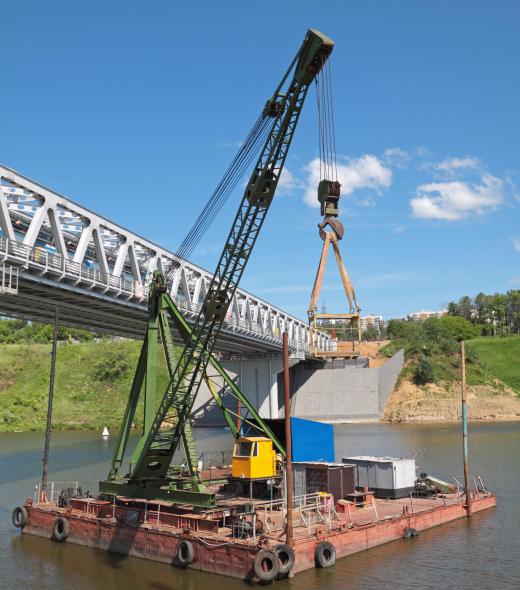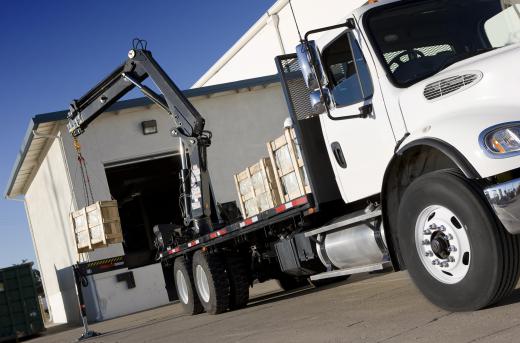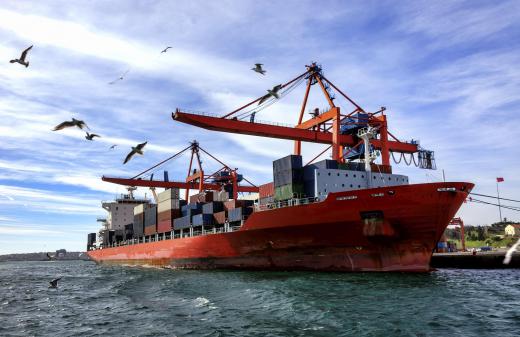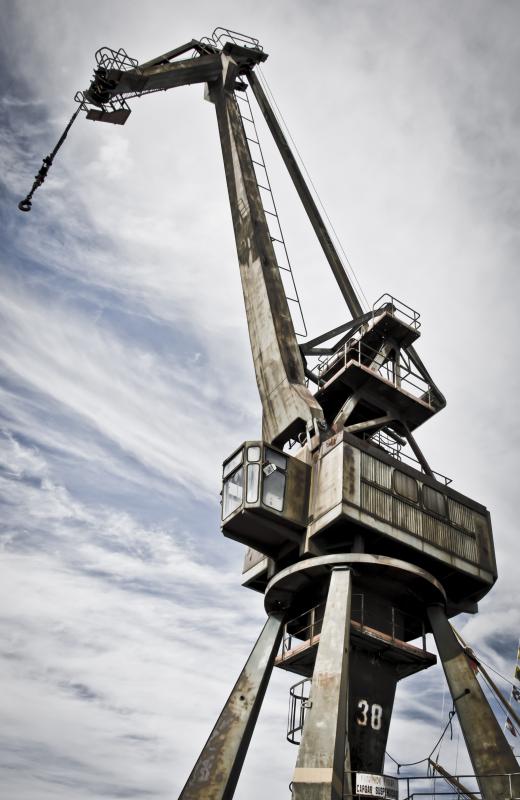Cranes are machines that use levers and/or pulleys to lift significant weights. The ones that a person might pass on the road may look like a fairly modern invention, but these machines have actually been used for at least the past 2,000 years, if not longer. The Romans used them to build huge monuments, and Medieval churches were constructed with them. The Egyptians may have used them to create the pyramids. The modern version can be either simple or complex, and they vary based on their application.
A relatively simple version is the mobile crane. A telescopic boom (arm) or steel truss mounts its movable platform. Either pulleys or levers raise the boom and, generally, a hook is suspended from the boom.

The platform of a mobile crane can either have traditional wheels, wheels designed for railroad tracks, or a caterpillar track, which is useful for navigating unpaved and uneven surfaces. This equipment can be used for demolition or earthmoving by replacing the hook with an appropriate tool, such as a wrecking ball or bucket. Telescopic cranes, with a series of hydraulic tubes fit together to form the boom, can also be mobile.

Truck mounted and rough terrain cranes are both essentially mobile as well. The truck-mounted version generally has outriggers to increase its stability. Rough terrain ones tend to have a base that resembles the bottom of a 4-wheel drive vehicle, and outriggers also stabilize them. They tend to be used in rough terrain, as the name suggests, and are frequently used to pick up and transport materials.

Loader cranes have hydraulic powered booms fitted onto trailers. They load goods onto the trailer and the jointed sections of the boom are folded down when not in use. The loader may also be considered telescopic, as one section of the boom, in some designs, may telescope for ease of use.
Stacker equipment is most frequently seen in automated warehouses where it tends to follow an automatic retrieval system. For example, in huge automated freezers, these cranes, equipped with forklift apparatus, can work by remote, stacking or obtaining foods as needed. This retrieval system makes it possible to keep workers out of the cold.

Gantry cranes are most often found in ports and railroads, where they unload and move huge containers off of ships and trains. The bases are huge crossbeams that run on rails, so lifted containers can be moved from one location to another. The portainer is a special type of gantry that lifts materials on and off ships.
Floating ones mounted on barges or pontoons are also essential to the shipping industry. Situated in water, they are used to construct ports, salvage ships or build bridges. Like portainers, this equipment also can unload ships. It is able to handle very heavy loads and awkwardly shaped containers.

Tower cranes, on the other hand, do not generally have a movable base. These are often the tallest type, and they have to be assembled piece by piece. The base looks like a long ladder, and the boom is perpendicular to the base. This equipment is used to construct tall buildings, and in the case of skyscrapers, one is often assembled and affixed inside the building itself during construction.
All cranes represent a meeting of simple machines, used for the purpose of reducing workload. However simple they may seem, they are instrumental in many aspects of industry. They can dig, move, create, or destroy, depending on their type. This equipment exemplifies the idea that sometimes the oldest ideas are the best ones.
